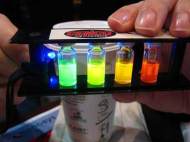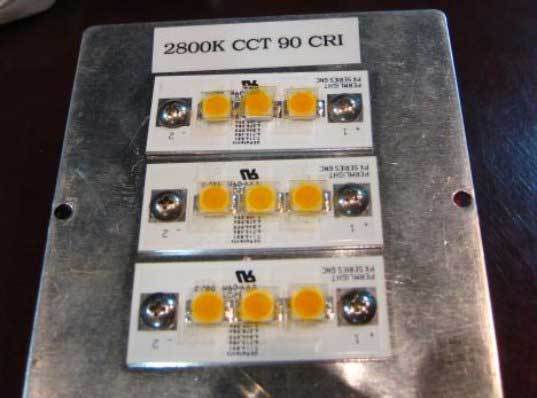Nanosys nanotechnology improves ordinary LED lighting
 After the huge fall, the folks from Nanosys decided to R&D and focus on some of their more promising projects instead only researching a large number of various nanotechnologies. One of their potential projects is using nanotechnology in order to make more efficient LED lights. Ordinary white LEDs generally consist of a blue light LED covered by a filter coated with a yellow phosphor. While the phosphor-coated lens turns the light white, it is a clinical, “cold” white light.
After the huge fall, the folks from Nanosys decided to R&D and focus on some of their more promising projects instead only researching a large number of various nanotechnologies. One of their potential projects is using nanotechnology in order to make more efficient LED lights. Ordinary white LEDs generally consist of a blue light LED covered by a filter coated with a yellow phosphor. While the phosphor-coated lens turns the light white, it is a clinical, “cold” white light.
Their technology is able to make the colors of LED displays more colorful and attractive with process-ready technology that electronics and lighting companies can easily add to their current LED manufacturing lines. It is manageable with usage of nanomaterials made out of semiconductor materials used to layer over blue LED lights (the most energy efficient LED color), forming better quality white LED light with a range of hues.
Nanosys Quantum Dot Remote Phosphors contain quantum dots developed by the company (similar quantum dots have been used in medical research). The quantum dot lens turns the blue light into a “warm” white light that resembles the kind of light that comes out of a regular incandescent bulb. The company simply uses standard blue LEDs, and adds their phosphor material made from nanomaterials to create warm white LED lights.
It enables a pure white light with very high color quality (CRI >90) at any desired color temperature, supporting a wide color gamut (>100% NTSC). As our eyes are more sensitive to green, the lights in displays have a higher level of green so that our perception of the brightness of colors is heightened without actually increasing the brightness of the display, which means we get better picture quality for the same low energy input.
Using this nanotechnology, the company has figured out how to make LEDs of virtually any hue with a color saturation far greater than current LED-backlit LCD displays, and lighting that has warmer hues.
Although Nanosys has made several demonstration LED light bulbs, the first market for these LED filters will likely be for LEDs used in TVs and notebooks to provide a wider spread of colors. Some LED-based notebooks now offer full color gamut, but it can impact battery life.










Outstanding as per usual. Yet another good article!
Great information, it really made me think. All the best!